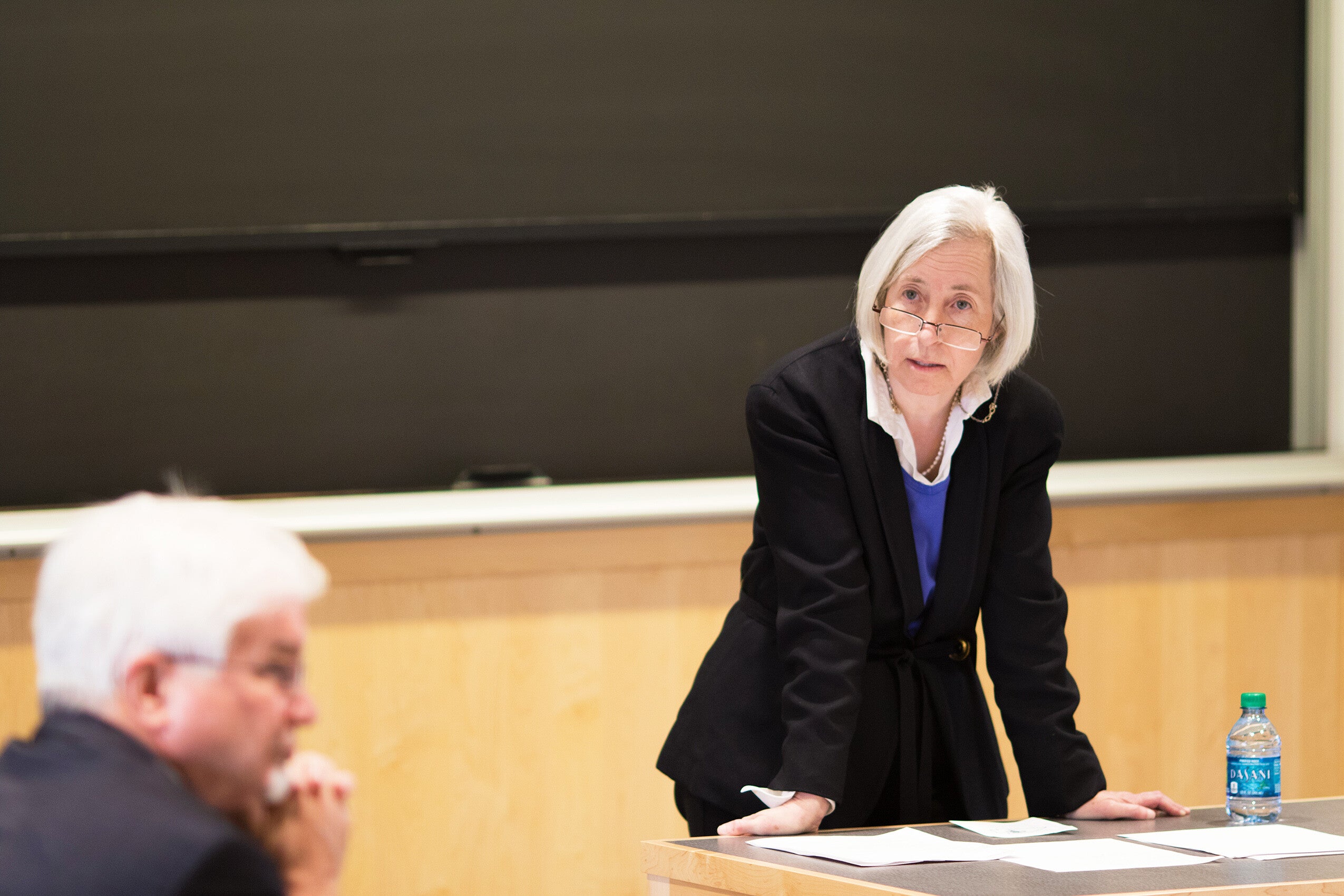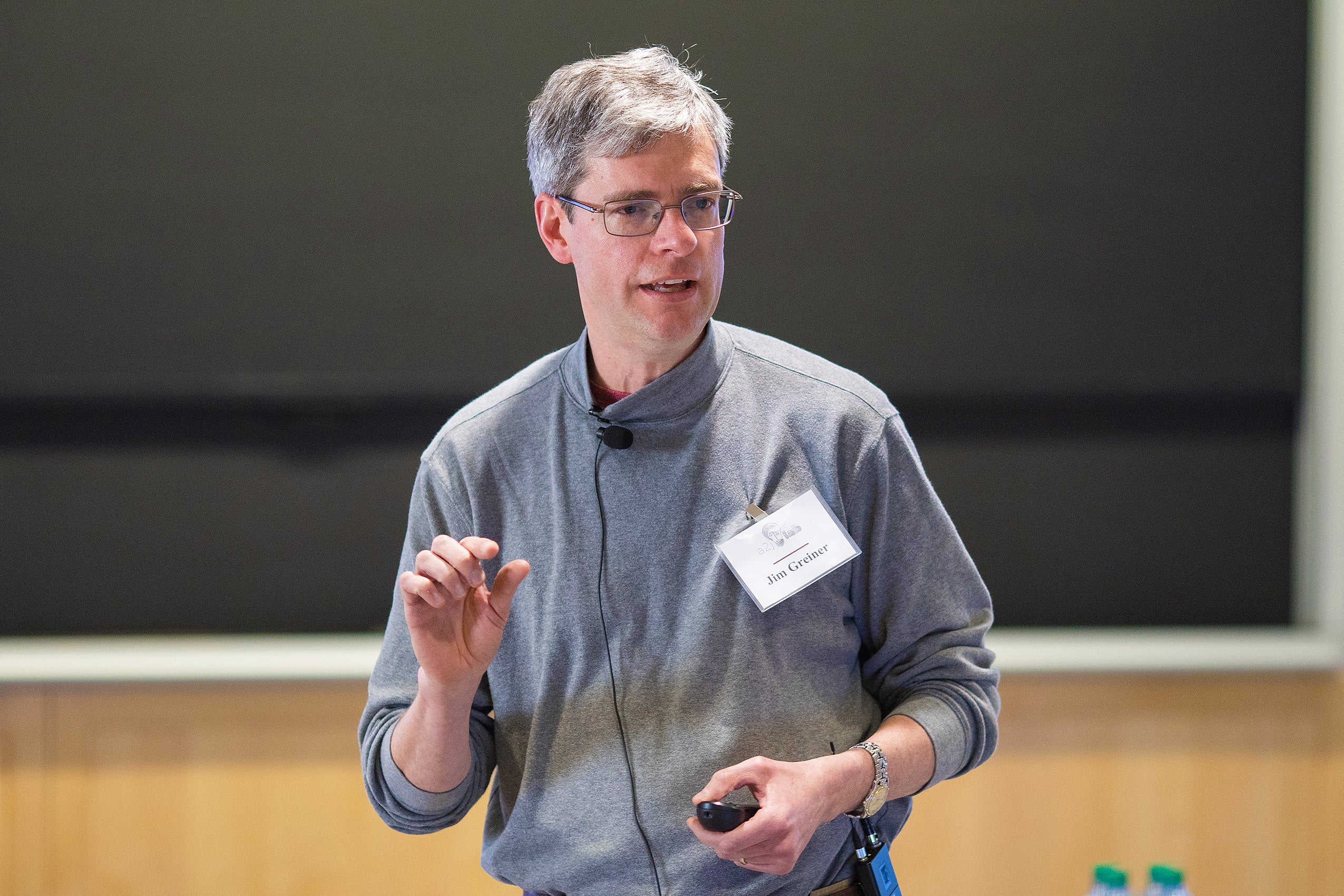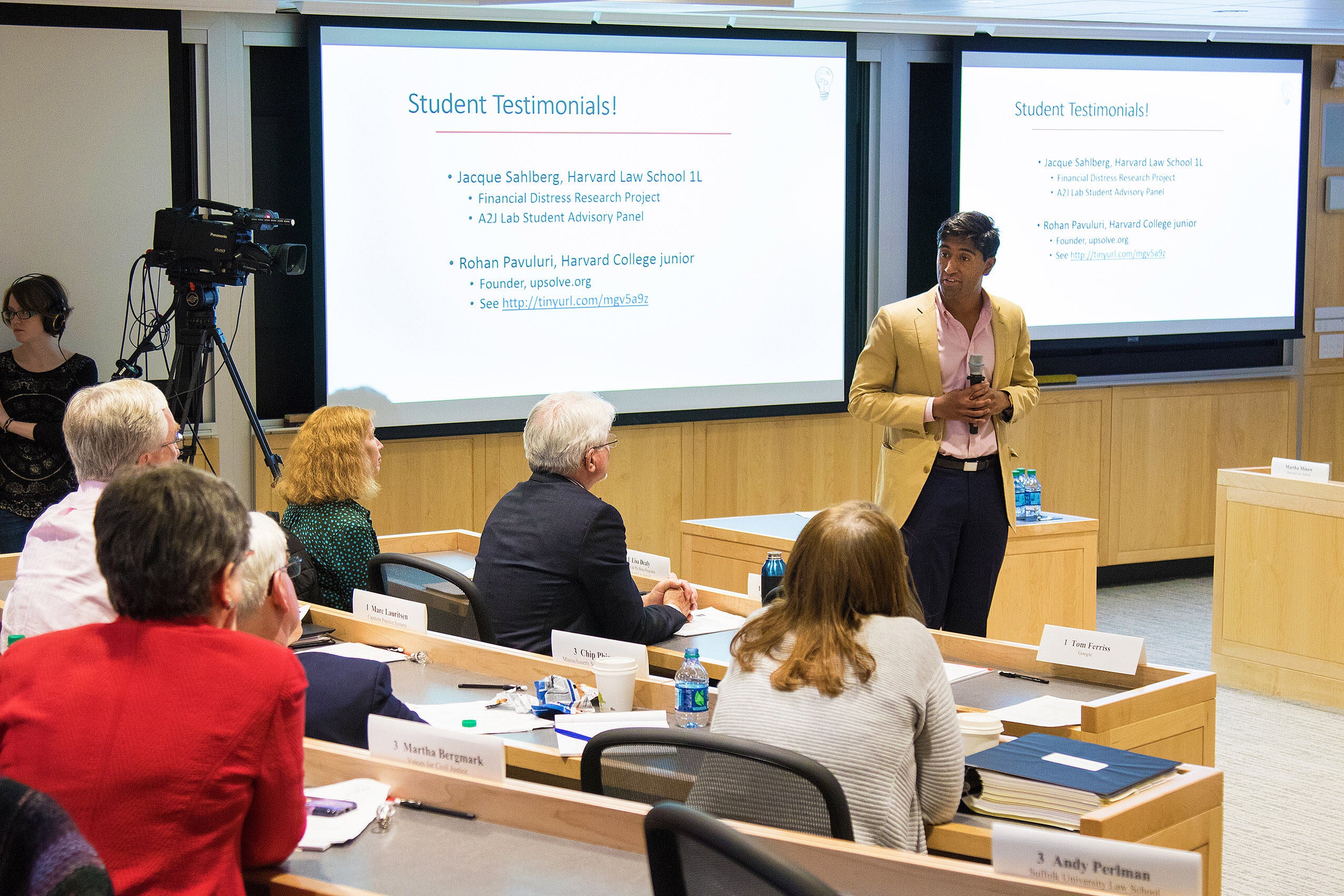Since its founding nine months ago, Harvard Law School’s Access to Justice Lab has aimed to revolutionize thinking about access to legal help. Often misunderstood and sometimes controversial, the lab sponsored a five-hour symposium in April that drew scholars from across the country to Harvard Law School.
As a response to the shortage of affordable legal services for poor and middle-class people who face debt-related legal problems, denial of benefits, domestic violence and divorce, the lab seeks to compile rigorous evidence of what works in law and what doesn’t, using randomized control trials. What the lab does, explains Faculty Director Jim Greiner, is apply scientific and statistical research to the questions of who gets legal assistance and how much difference it makes. “We are researchers and scientists, and we’re all pretty nerdy,” he said in an interview last week. “Our instinct is to go into our caves to find out truths about the world, but that isn’t very useful by itself. Being a Southerner, I’d describe the event as coming-out party for the Lab — and also an opportunity for objections to be raised and answered.”
The lab displayed different facets of its work during the afternoon sessions on April 19. Beginning with remarks from Greiner and Dean Martha Minow, the afternoon included presentations from the lab’s Research Director Christopher Griffin and Associate Director of Field Research Erika Rickard ’10, who outlined studies now underway. The class then split into groups for a problem-solving exercise, and compared results when the class reconvened. Finally, Greiner led a wide-ranging discussion on the lab’s future direction.

In her opening remark, Dean Minow said that “gold standard research” is going on at the Lab. “Crisis is an overused term, but there really is a crisis with access to justice,” she said; and the main problem is that there aren’t enough legal resources to match the need. “Rights don’t enforce themselves, whether it’s victims of domestic violence, or senior citizens caught in phone scams, or veterans who can’t access benefits that we as a society owe them. We will never provide lawyers to everyone who is entitled to one.” Nothing can change, she said, until we determine the best way to use our scarce resources. “This is the first serious attempt to investigate that. That is why the Access to Justice Lab is so crucial.”
Greiner then took the podium to explain the lab’s mission of challenging conventional legal wisdom by instituting randomized control trials. This undercuts the standard practice of lawyers making regular decisions on who will receive which level of care. While we’d like to assume that everyone seeking legal services would receive the same level of care, the amount of available resources would make that impossible. In its control trials, the lab substitutes lawyers’ decisions with randomized ones, providing different levels of service and analyzing the results afterward. Because it assumes that lawyers don’t always know best—in Greiner’s words, the lab’s work “challenges legal exceptionalism” — it is bound to go against the grain.

“We have a problem in law: We think we know everything and we’re wrong,” Greiner told the class. “We need to get over the idea that because we’re lawyers, we can’t learn from any other field.” The fundamental issue with access to justice, he said, is that “a lot of what we do is wrong and we don’t yet know what that is.”
The randomized trial, he said, is one way of transforming law into a science, where a glaring problem such as the lack of effective legal access can be studied and remedied. He equated this work to medical research, where new drugs are given randomized trials as a matter of course. There have, Greiner noted, only been 50 random clinical trials in U.S. legal history, while the number of medical trials is too large to be known. “If you’d uttered the words ‘medical science’ in 1935, people would have laughed at you,” he said. “We can transform law into a science as well.”
We have a problem in law: We think we know everything and we’re wrong.
Faculty Director Jim Greiner
Greiner and his colleagues then gave reports on specific trials that are underway. Erika Rickard is helping to plan a study on the legal services provided by the state of Ohio for victims of domestic violence. In this case there are a number of variables, including who makes the triage decisions, which lawyers handle the cases, and whether specific remedies, such as restraining orders, actually make the plaintiff safer. The emergency room, she said, is the perfect example of a situation where resources are scarce and a decision has to be made about who gets the highest levels of service.
As Greiner explained in a later interview, the lab’s study will randomize who makes the triage decisions, and which plaintiffs receive the highest levels of legal service. In three studies about levels of service done so far, Greiner said, the results were widely varied: In one study higher service made a massive difference in the outcome, in another the recipient of services gained no advantage but the process was slowed down, and in a third study there was no discernible difference. This he said only opens further questions, including what constitutes success in such cases — it could be winning the case, or it could be stability in the plaintiff’s life a year later. “What we know is that you can’t just say that full representation makes a difference in every setting; it’s like giving penicillin to every sick patient. You have to work a little harder than that.”

The day’s interactive session was based on another lab study that is now nearing completion, “The Problem of Default.” The real-life problem in this case is that 90 percent of people sued by debt collectors don’t show up in court, and thus automatically lose their cases by defaulting (Even if they are liable for the debt, they’d likely get an easier settlement by turning up). The lab is exploring whether a certain sort of advance mailing would increase turnout, enough to justify the cost of the mailings. The study involves three groups totaling 800 cases, with a control group receiving no mailings, a second “limited” group receiving a package of materials (with lab-designed cartoon illustrations) explaining their legal rights; and a third “maximal” group receiving the above plus an advance postcard and a stamped response envelope
Breaking off into groups, the attendees were invited to design their own version of a mailing that would encourage maximal response. Many of the groups came up with the same recommendations—sending out a postcard in advance of the full mailing, emphasizing the defendant’s legal rights, using snappy graphics and illustrations, and using the kind of attention-grabbing language found in junk mail. These were some of the same conclusions reached in the lab’s own study, which was distributed afterward. The lab’s mailing featured “Blob,” a distinctive raceless and genderless cartoon figure that features in many of their printed and online reports.
“That’s a good way of showing how the lab takes lessons from other fields, and how we can deploy them creatively,” Greiner said. “In this case we took lessons from psychology and behavioral science. Also from adult education, about the importance of images and cartoons; and from junk mail providers on what an envelope should look like. There is political science involved as well: How do you get people to a location at a particular time, whether it’s a voting booth or a courthouse? So the lab is about more than the randomized studies. Part of what we do is creating new ideas and interventions, and here people got to participate in that.”
The seminar’s final hour included a freewheeling discussion about the lab’s future. Greiner not only asked what practical steps should come next, but which philosophical questions it should be asking. Not surprisingly there were a lot of diverse suggestions: Practical suggestions included working with existing groups such as the Justice for All Project, continuing to focus on random control trials because no other organization is, and not being shy about sharing the lab’s findings. The suggested questions were also wide-ranging, including “How far do we inject ourselves into a public policy debate?” and “How do we work in ways that encourage integration?” Attendees also pointed out that access to justice and access to a lawyer aren’t always the same thing, though one may encourage the other.
During the post-event interview, Greiner said he was highly encouraged by the response. “We’ve gotten tougher questions about our work before,” he said. “Questions like, ‘Is this ethical? Is this legal? And, ‘This takes too long, why should we be asking these questions when we already know the answer?’ My response to that is that it takes so long because we think we have something that works and we don’t want to deprive the field of it.” As he points out, the staff of the Access to Justice Lab is still only five people. “At that level you can’t hope to put much of a dent on the level of knowledge. What you can do is help to create a movement.”
